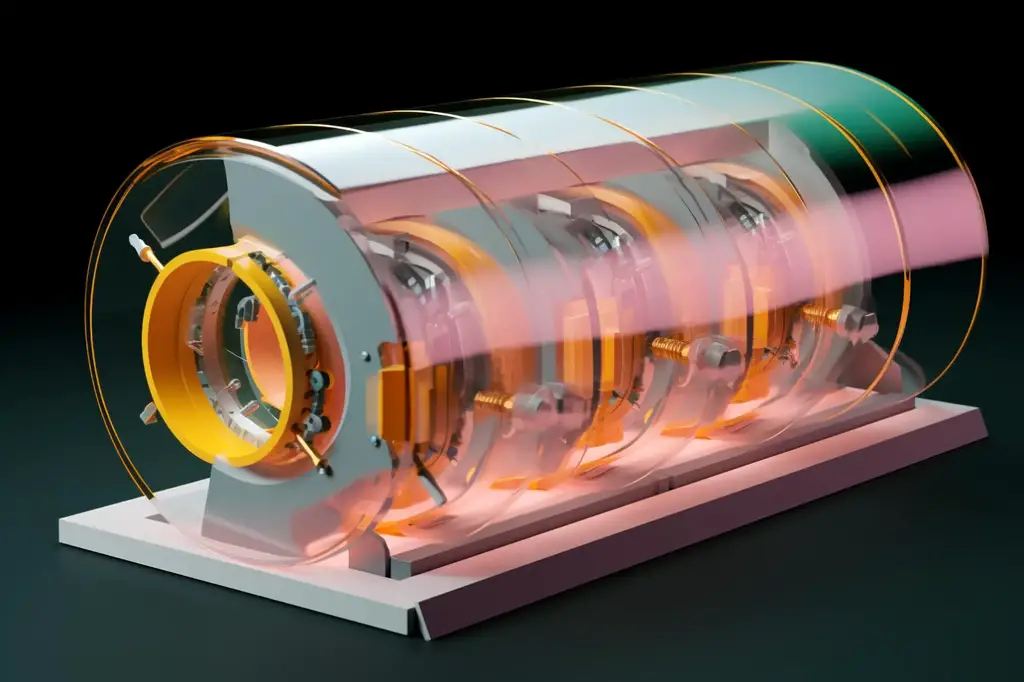LK-99 could be the first room-temperature superconductor.
Room temperature superconductors are the tools that can revolutionize quantum technology. If the computer uses room-temperature superconducting circuits there is a possibility that the users can load electricity in that system. Electricity travels without resistance. And that gives extremely bright visions for the quantum and other types of computers.
The MIT researchers made the first superconducting diode. And if all other computer's components can turn superconducting the researchers must just load electricity into the electric circuit. And after that, the computer doesn't require an outside energy source until the information must output.
In some models, some kind of outside system replaces electricity that is lost in resistance. And that thing makes it possible that when components use electricity from a superconducting circuit the silicone plates with photovoltaic phenomenon can replace that loss of power. Another thing is that in superconducting circuits information can keep its form. The thing that limits the use of superconduction is that the system requires extremely low temperatures or high pressure that stabilizes atoms in the wire.
In some visions, the superconducting wire can be the nanotube where is metal atoms connected in the nanotube. Then in and outside the nanotube travels laser rays. The purpose of those laser rays is that they deny energy travel in and out from the hollow nanotube. So laser rays force electrons to transmit the energy horizontally. The problem with active superconductors is that they require lasers or some other things to maintain superconductivity.
"MIT researchers have created an efficient superconducting diode that could enhance electronic current transfer and reduce energy use in high-power computing. This development may also benefit quantum computing technologies. (Artist’s concept of a superconducting device prototype.)" (ScitechDaily.com/MIT Develops Superconducting Device To Radically Cut Energy Use in Computing)LK-99 could be the game changer in superconduction technology.
If the Korean research team is right, they created a room-temperature superconductor. That thing revolutionizes computing and energy production. The new superconducting material called LK-99 can turn superconducting at room temperature. Before that LK-99 superconductor researchers tested things like graphene there is a metal layer on it.
The two-dimensional metal wires can press by using very high pressure. The pressure stabilizes atoms in superconducting materials. Researchers can connect high pressure with low temperature. And higher pressure means higher superconducting temperature.
The problem in resistance is not the most out atom layer where electricity moves. The problem is the second atom layer that sends energy through that most out atom layer. When energy travels through those atoms it forms standing waves that we know as resistance.
One of the ways how to remove resistance is to use wires that are only a single atom layer. If researchers can make a plate-looking single-atom layer by using metal atoms, that thing allows them to make the superconductor if that layer is far enough from the wire's walls.
Superconduction is not a very new thing. The idea is that in superconducting wires atoms are very close to each other. And that denies forming of standing waves between atoms. When electricity travels in wires or shells of wire electrons are not moving in that wire. They send wave movement to the electrons at a lower energy level. So electricity is like a radio wave that travels on the wire.
Electricity travels only on shells of metal wires. The reason for that is that. Inwire's shells, electrons have space for jumping up and down. If those electrons will be stable and they send radio waves only horizontally that thing removes resistance. That stabilization can be done by using high pressure.
That allows electrons can transmit wave movement horizontally. Electricity cannot travel in the wire because the outer shells of the wire pull energy vertically outside. And that energy plays an important role in the resistance.
"Superconductivity representation (Courtesy: iStock/ktsimage)" (Phys.com/Korean team claims to have created the first room-temperature, ambient-pressure superconductor)
Sometimes. Researchers try to make the superconductor by using silicone and metal hybrid material. In that material metal and silicone atoms are against each other. And the photovoltaic phenomenon in silicone would replace the energy loss in metals. But that thing is not a real superconductor.
When electricity travels on wire electrons transmit wave movement into the next atoms. Part of that energy reflects and forms a standing wave between atoms. And that standing wave is the thing that pushes atoms away from each other. Those standing waves stop the electricity. The thing that could make the home-temperature superconductor is a material that can pull electricity away from those standing waves.
And all the time electricity requires more and more energy to travel through those standing waves. That thing causes oscillation. And the temperature in the wire starts to rise. When the temperature in wires rises distance of atoms turns longer. That thing increases the energy of standing waves until the temperature breaks the wire.
One way to remove those standing waves is just to conduct that extra energy away. If there are no standing waves between atoms. There is no resistance. In superconduction atoms are taken as close to each other as researchers could that thing denies the standing wave.
https://physicsworld.com/a/have-scientists-in-korea-discovered-the-first-room-temperature-ambient-pressure-superconductor/
https://www.nytimes.com/2023/07/26/science/ranga-dias-retraction-physics.html






No comments:
Post a Comment
Note: Only a member of this blog may post a comment.